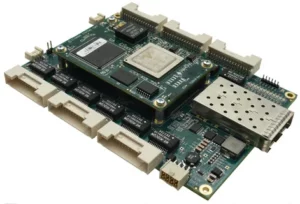Each storage device has a lifecycle, just like humans. The IT management must guarantee the integrity and confidentiality of the data from the point of device acquisition to staff allocation and destruction. Sanitizing the storage device before reallocating and discarding it is crucial to ensure that no data remains on it. Problems with data breaches can result from certain risky data disposal techniques.
The majority of firms, it appears, are still not aware of the correct procedures for secure data disposal. You can ask any data recovery specialist, and they’ll confirm that formatting the storage device or removing files won’t fully wipe the data. There may be catastrophic repercussions if the remaining data ends up in the wrong hands.
Let’s examine several risky data disposal techniques and their related risks.
Unsecure Data Disposal Techniques
1.The hard drive’s formatting
Some IT teams use formatting the hard drive as a method to clean out the information kept there. In spite of this, any third-party data recovery software can still recover the data even after formatting the hard drive. The old data cannot be completely wiped without first overwriting the storage device. Employing a data wiping programme to entirely remove all data from the device is an option, as is using a degausser to render the drive useless.
2. Data deletion
What steps do you take to delete a file or folder? You use the keyboard’s “DEL” key, right? The file is removed from your computer for you. Nevertheless, this is untrue. When a file is destroyed from the system, just its address pointer is also removed from the file system’s address table. Any IT specialist can easily recover the data from the storage device. To thoroughly delete the chosen files, it is advised that you utilize data wiping software.
3. Destroying the storage device
The worst approach to dispose of data is to damage the storage device. The storage device is always damaged before being discarded by the IT department. The storage device can still be fixed to retrieve the data even after improper destruction. Additionally, this method of data disposal produces a considerable volume of e-waste. The organization is forced to exert more effort as a result, and the environment is also negatively impacted.
4. Tear instead of shred
Paper documents still play a significant role in official activities even if the world has gone digital. The act of shredding a piece of paper or folder before tossing it in the garbage is one of the most frequent errors made by professionals. The information can be gathered by anyone by putting those parts together. The undesired papers should be destroyed with a shredder so that the data they contain is rendered unintelligible.
Risk of Disposing of Data Inadequately
The organization must securely destroy data due to the strict data protection rules in place and the rising number of data breach instances. For the business, improper data erasure might have major consequences. Let’s examine some dangers related to improper data disposal.
1. It may result in fraud
The security of corporate data, including identification information, banking information, contact details, PAN information, and birth dates may be jeopardized if storage devices are not disposed of appropriately. The information can be used to the scammers’ advantage if it ends up in their possession. As a result, there may be an increase in data theft, financial fraud, tax evasion, spam attempts, and other crimes.
2. Penalties May Result from It
Recent years have seen a rise in stricter data protection laws and compliance requirements. Data handling processes have been established by data protection laws including GDPR, HIPAA, and CCPA, violations of which could result in severe fines for the firm.
MarketWatch reports that owing to infringement of the GDPR laws, Amazon could be subject to a $425 million penalty. This demonstrates how important it is to abide by these rules. Therefore, businesses need to use the right data deletion techniques.
3. Your business could be harmed by it
An unauthorized individual may obtain the residual data on a storage device if it is not properly disposed of away. This could have disastrous effects on your company if the person decides to sell this information to the opposition. Additionally, if the owner of the storage device has ulterior motives, they might release your information online or demand a ransom.
How can data disposal be done effectively?
Effective data removal can be accomplished using a number of techniques, including data wiping, hard disk degaussing, or shredding. According to the type of data and storage systems, you can either decide to complete the data destroying process internally or pick 3rd party tools or services.
The advantages and disadvantages of in-house data destruction and in-lab services will be discussed.
Lab-based data wiping services
The process of deleting data can also be carried out with the aid of specialized services. With cutting-edge, unique equipment and knowledgeable staff, the supplier can handle the data deletion process. Additionally, they issue certifications of data erasure, which guarantee that the data is totally lost and cannot be recovered.
You can benefit from the provider’s experience and cutting-edge infrastructure by choosing a third-party service provider. As opposed to internal efforts, it is slightly more expensive.
Data deletion did inside
You can use BitRaser Drive Eraser, a data erasing programme, before destroying the storage medium. Any storage device, including hard drives and USB devices, has all of its data completely erased by the data wiping software, rendering it impossible to recover the information.
As you are performing the data wiping yourself, using a data wiping programme has an assurance of security. On the other hand, you wouldn’t receive the knowledgeable assistance of a data recovery specialist.
Note for the End
Data cannot be fully removed from the storage device using Unsecure Data Disposal Techniques. Using a data recovery tool, it is simple to retrieve the remaining data on the drive.
If information gets into the wrong hands, it could damage the reputation of your company, cost you money, and result in legal consequences. In order to properly dispose of data, businesses must use the appropriate equipment and processes, such as data wiping software, degaussing, and shredding.





Be First to Comment